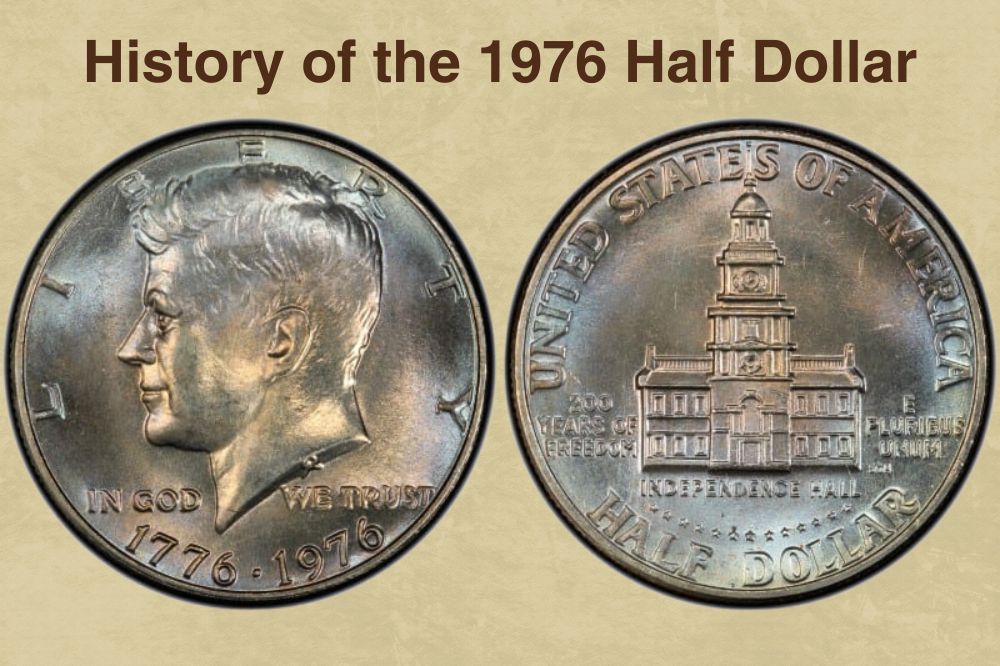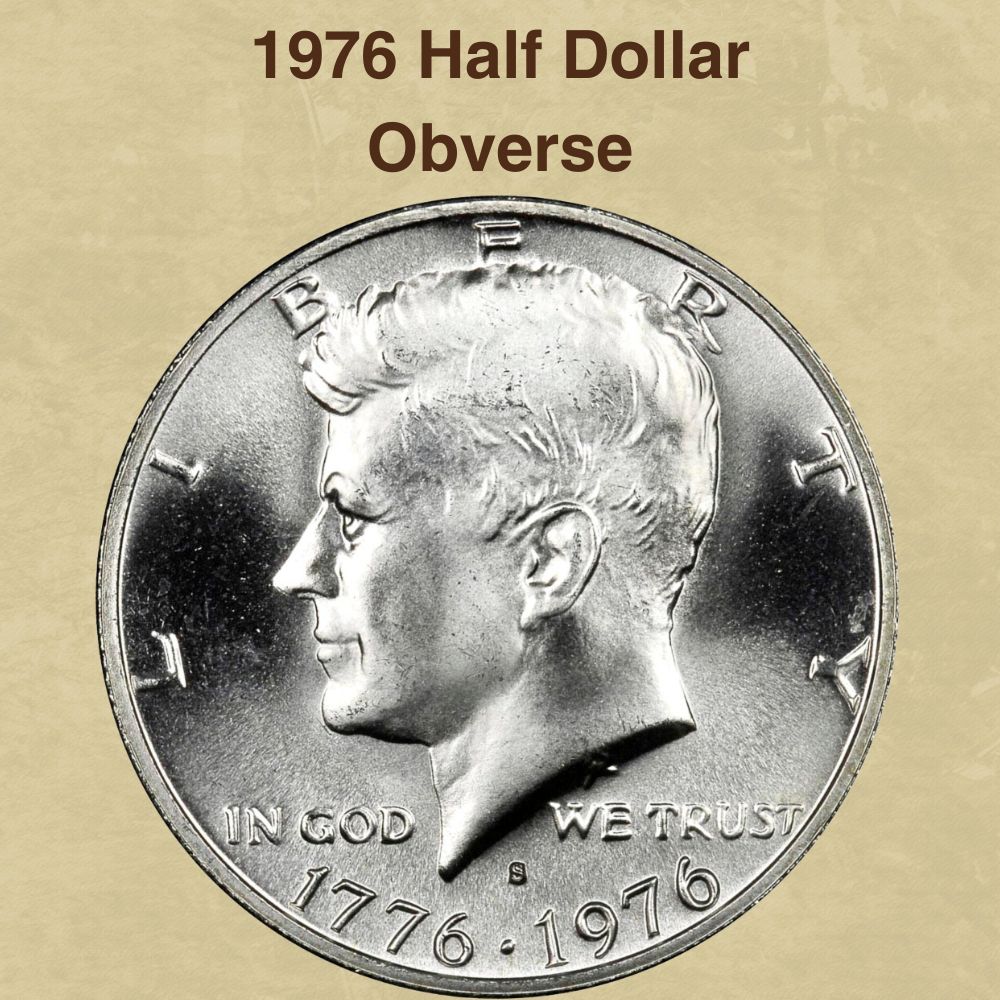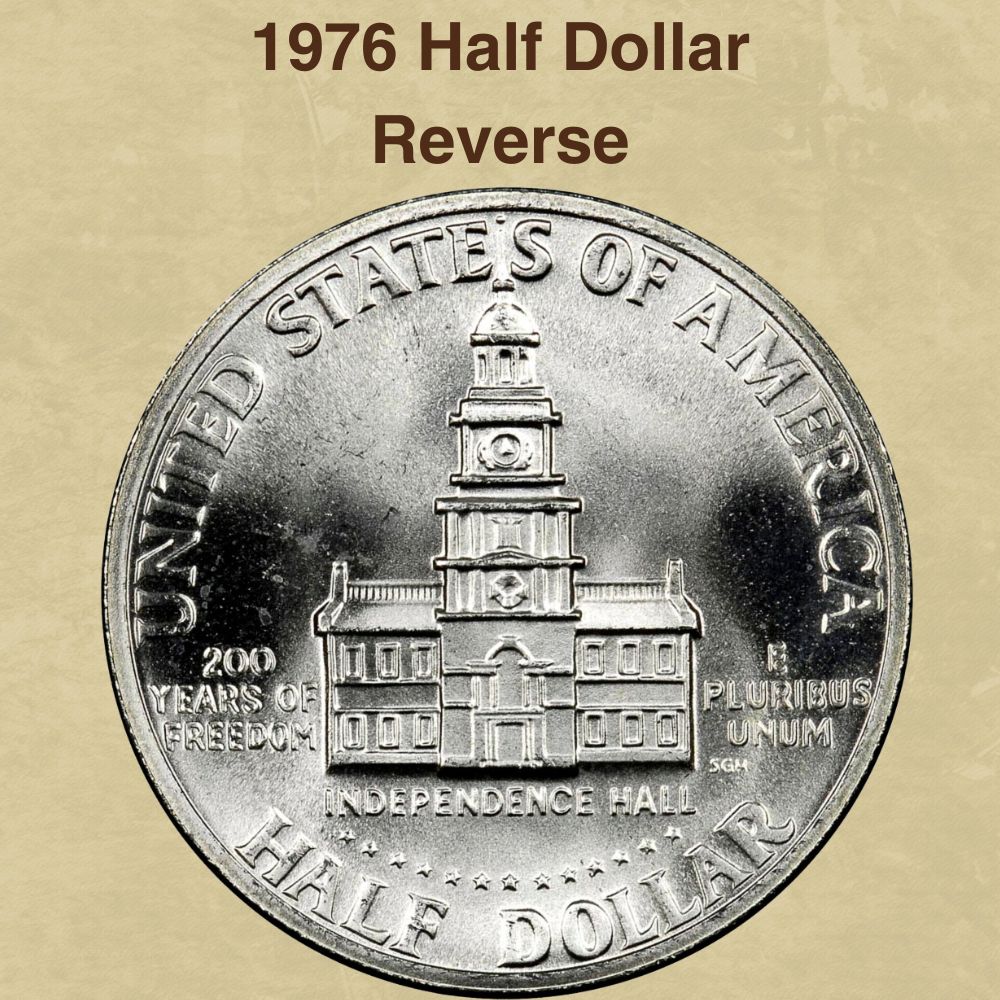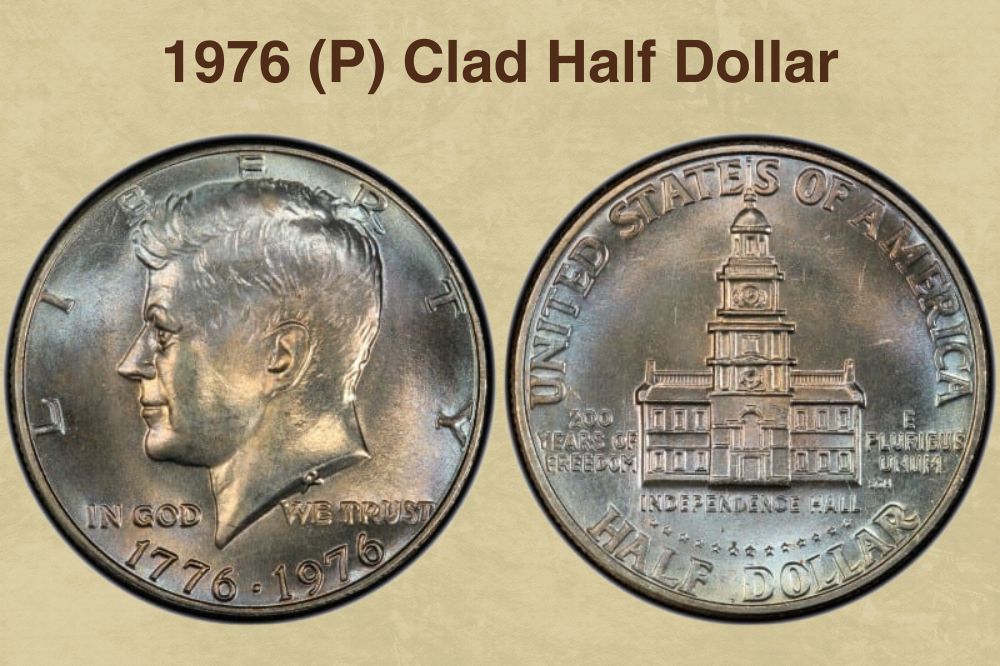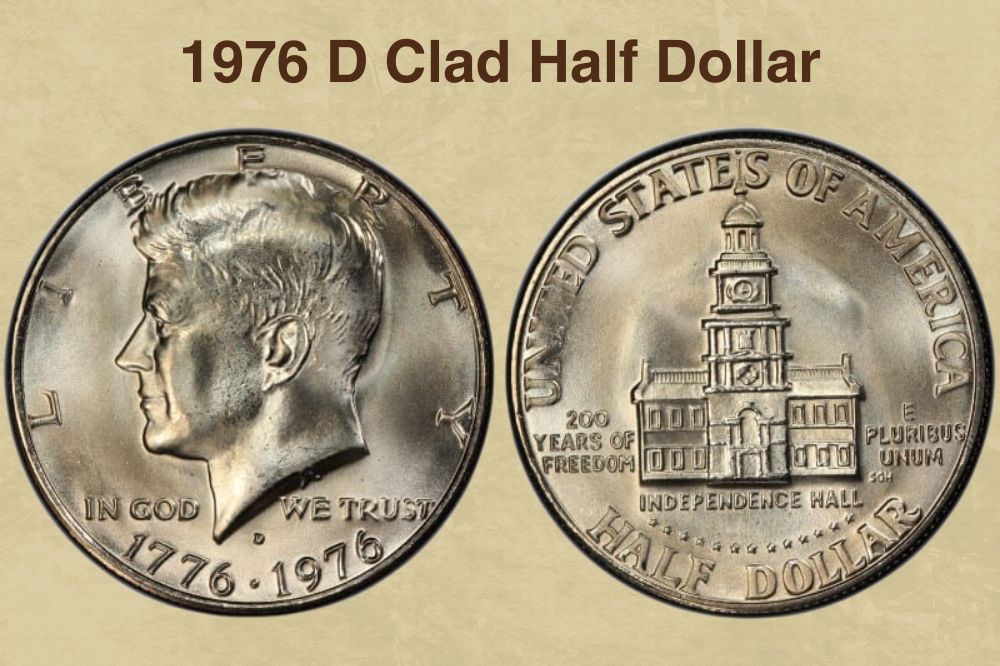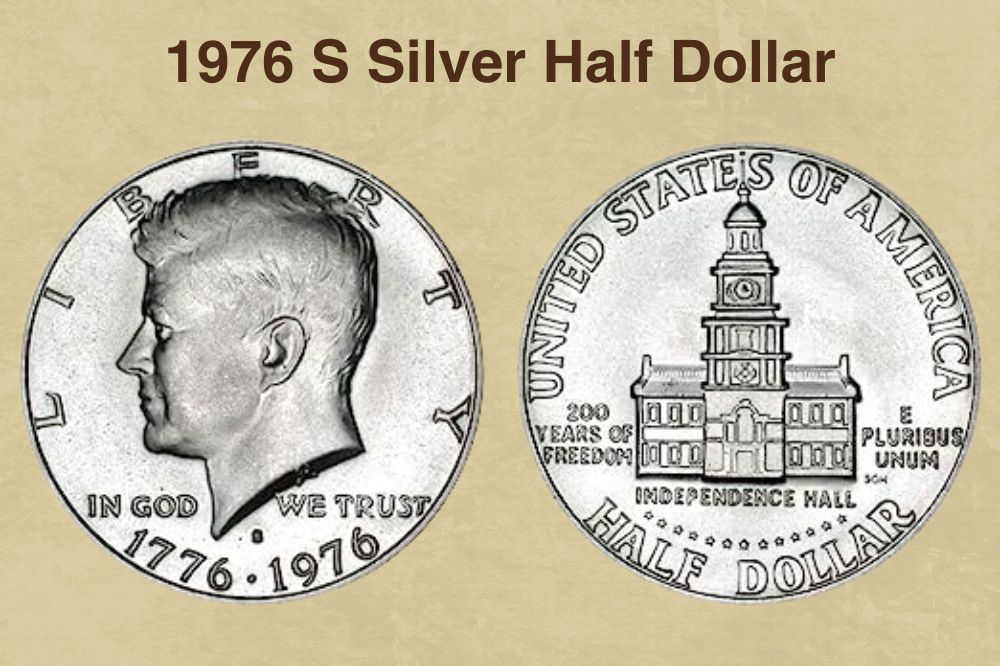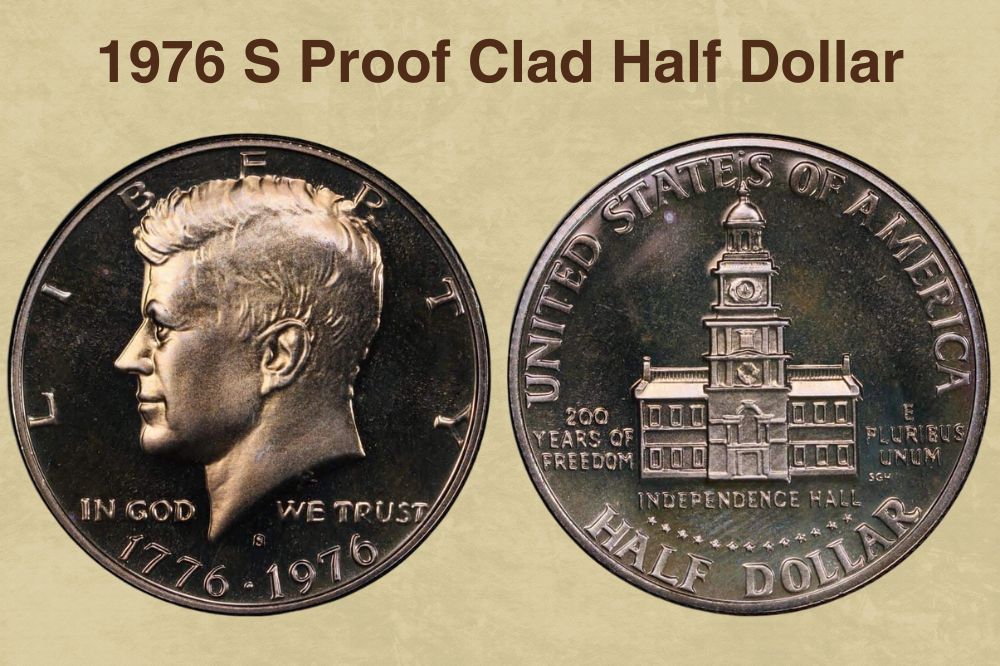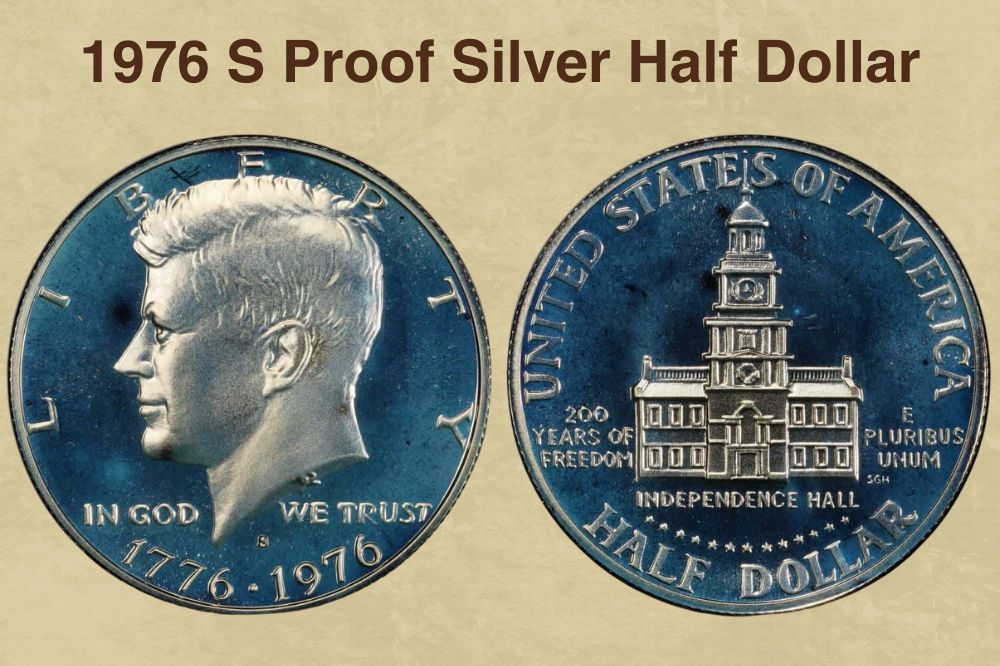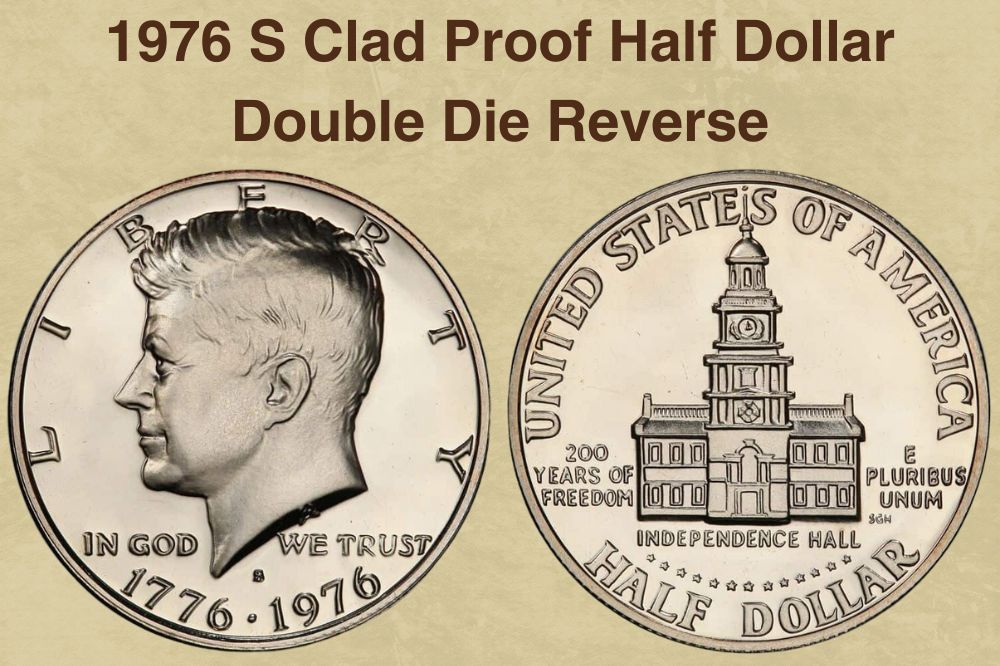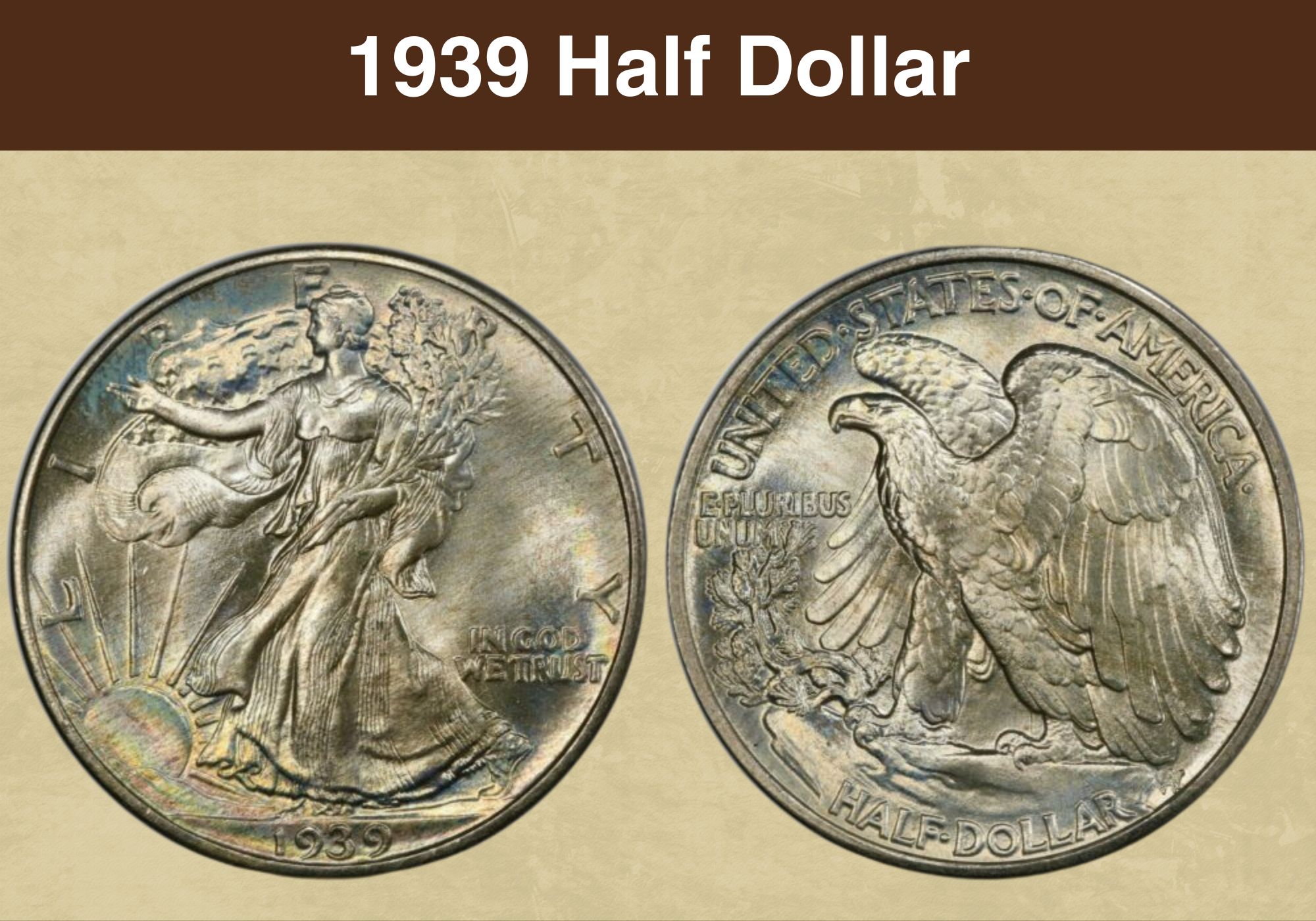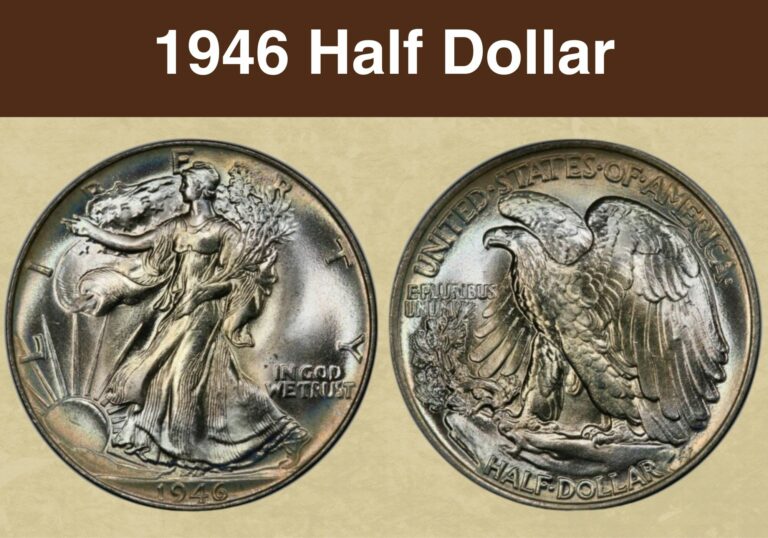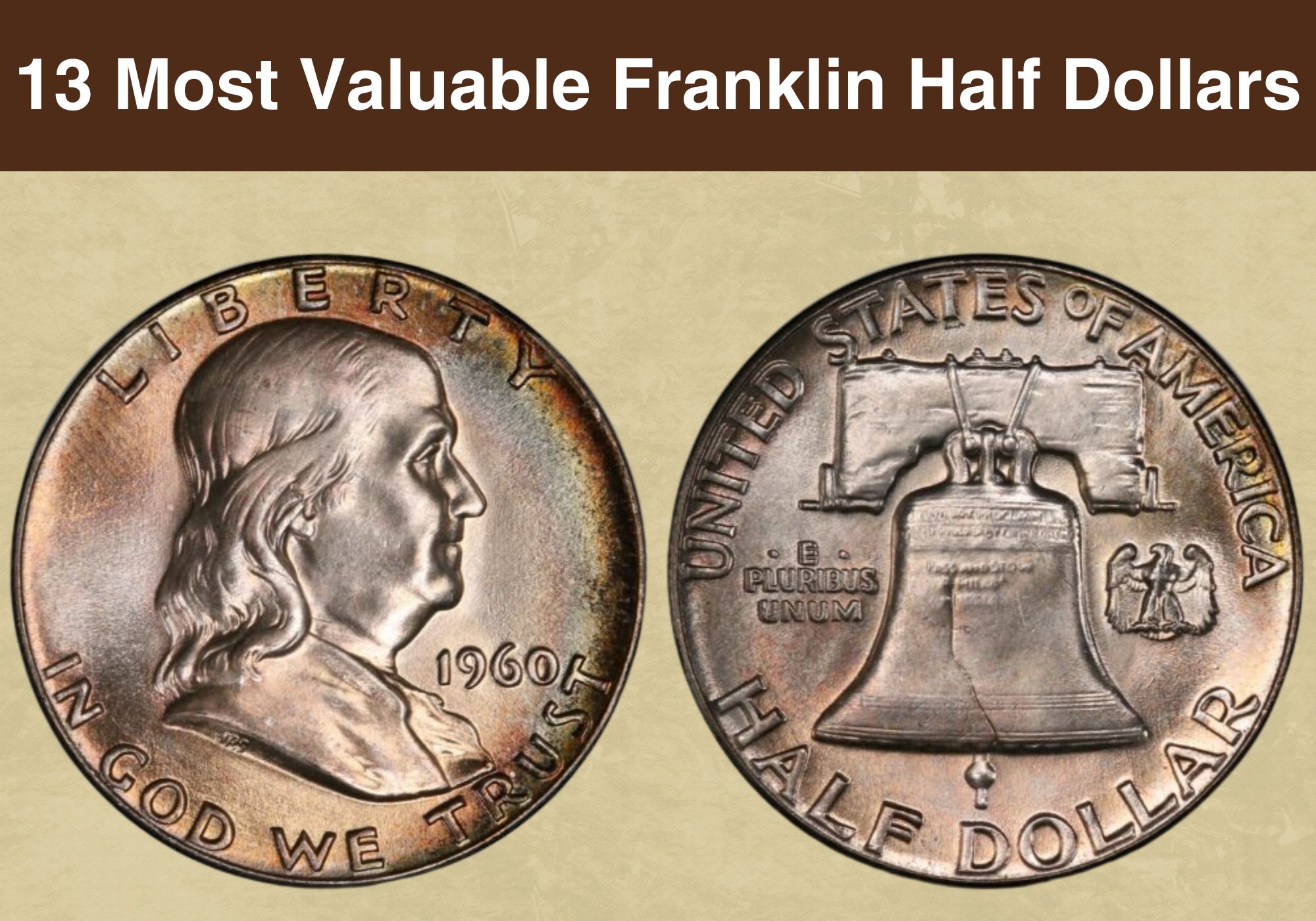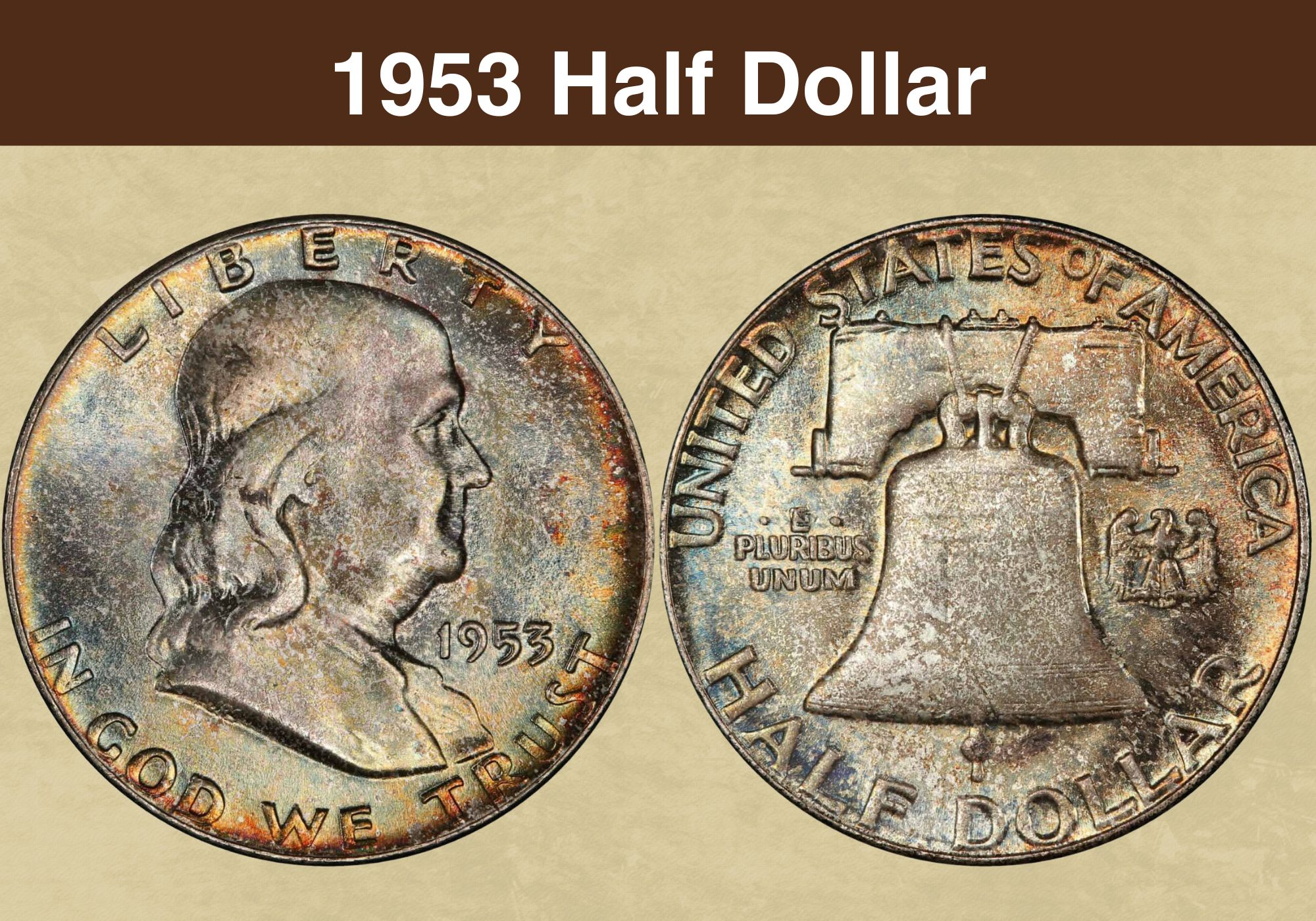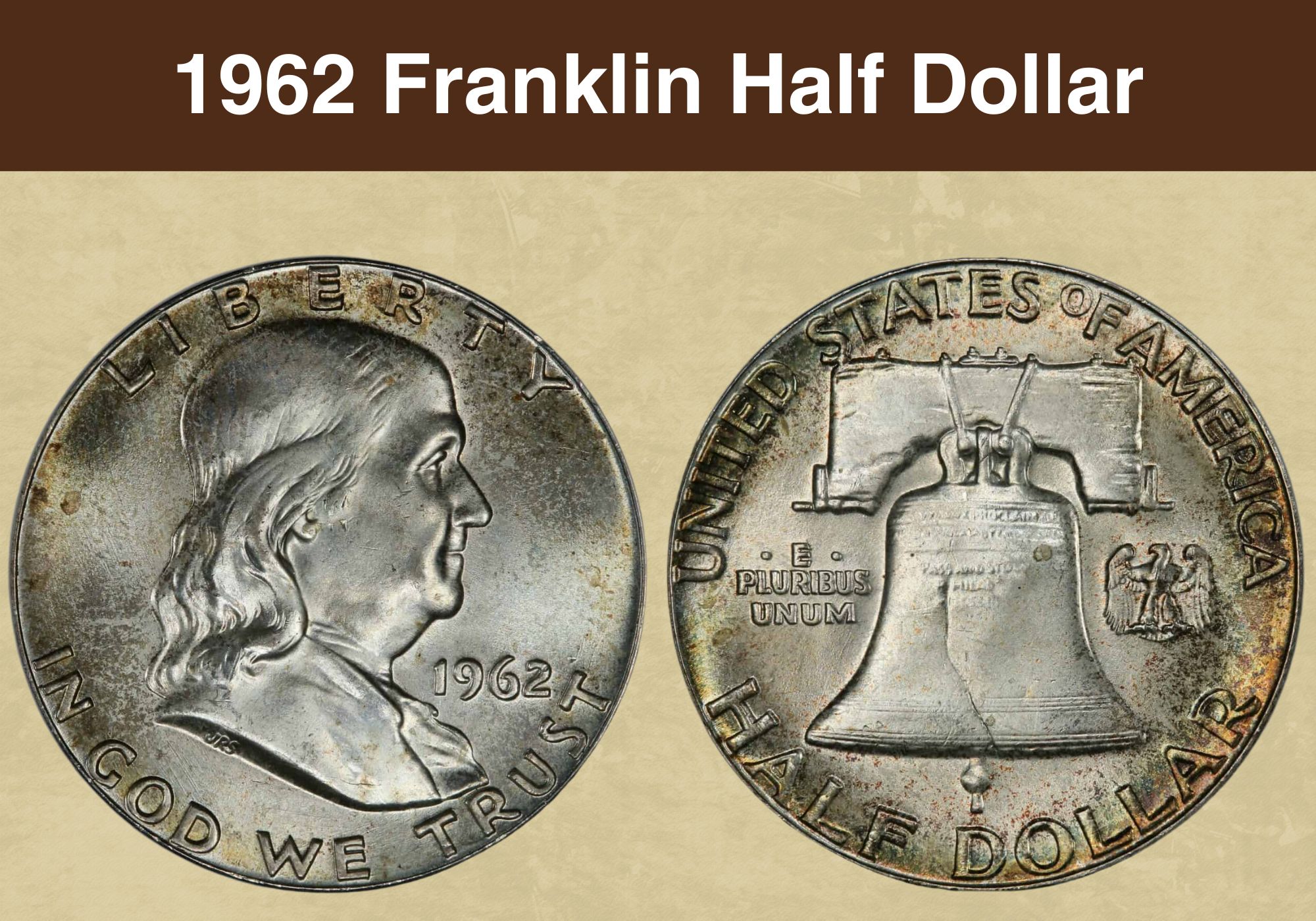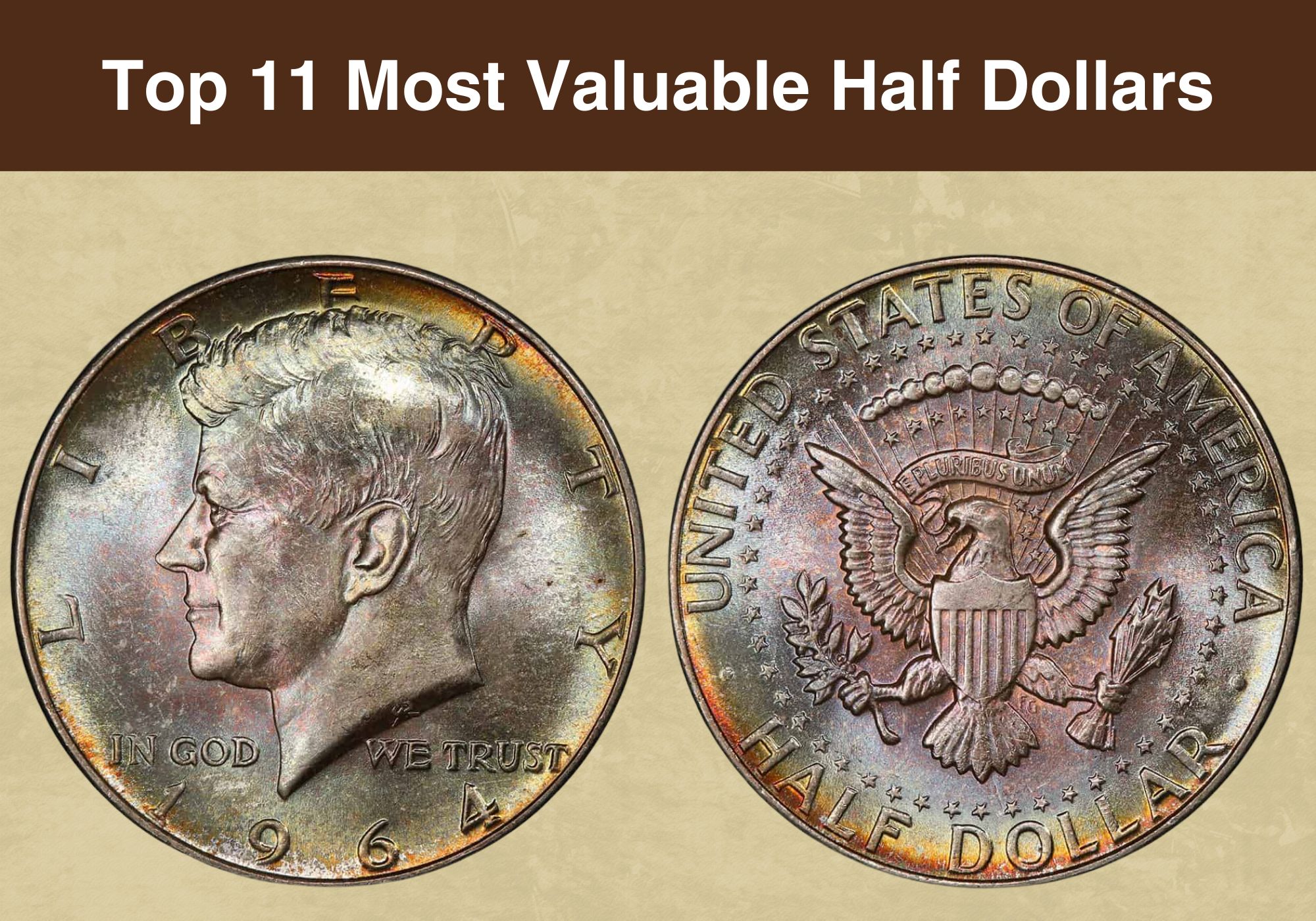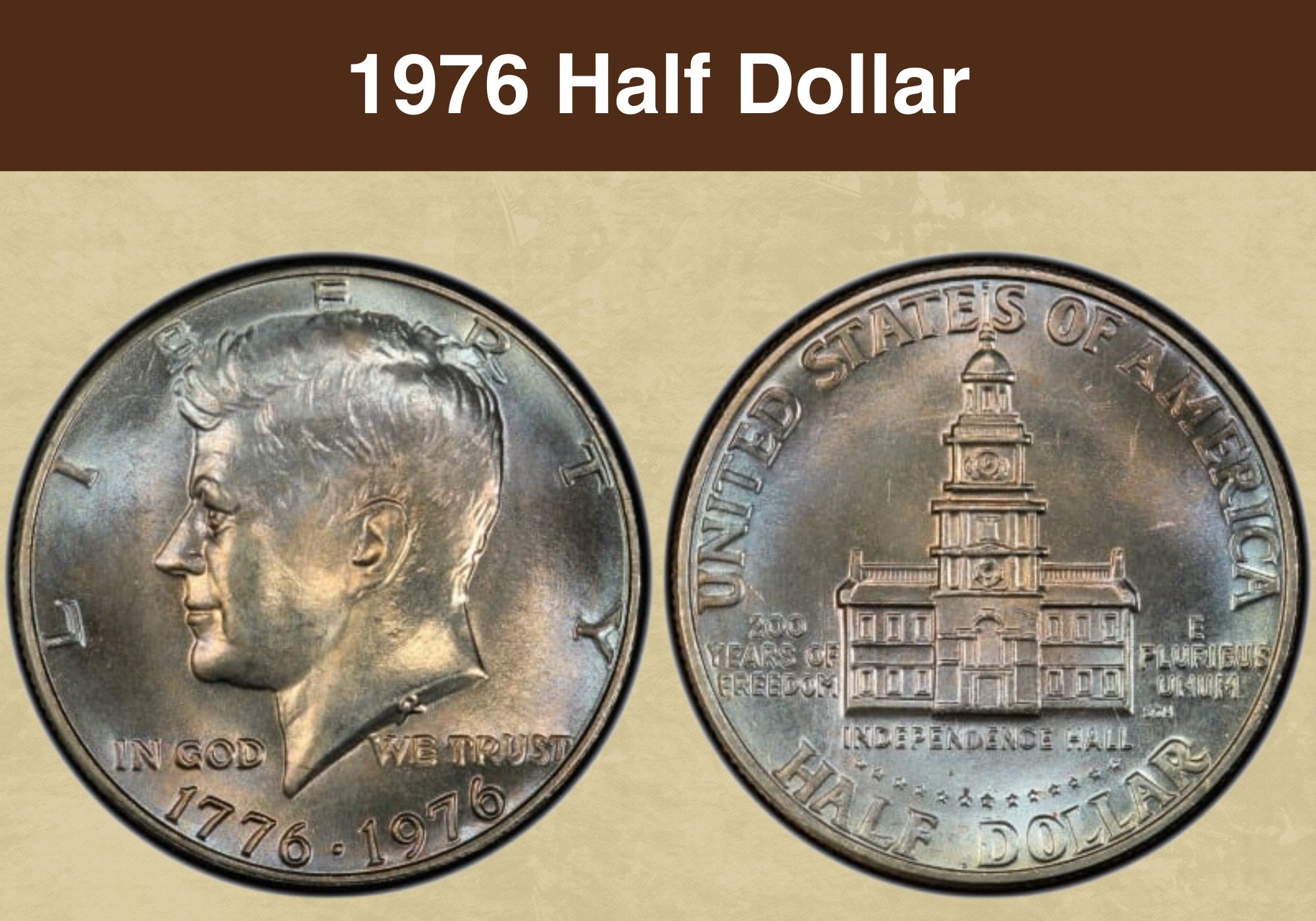
Coin Value Contents Table
- 1976 Half Dollar Value Chart
- History of the 1976 Half Dollar
- Features of the 1976 Half Dollar
- 1976 Half Dollar Grading
- 1976 Half Dollar Value Guides
- 1976 (P) Clad Half Dollar Value
- 1976 D Clad Half Dollar Value
- 1976 S Silver Half Dollar Value
- 1976 S Proof Clad Half Dollar Value
- 1976 S Proof Silver Half Dollar Value
- Rare 1976 Half Dollar Error List
- Where to Sell Your 1976 Half Dollar ?
- FAQs
1976 was a momentous year: it marked 200 years since American independence. To celebrate the occasion, new versions of three denominations were produced. One of those was the half dollar, commonly referred to as the Kennedy half dollar.
We’re going to explore the 1976 half dollar value. We’ll look at the difference between a coin that’s worth a few dollars and one that’s worth thousands. And we’ll investigate some of the error coins that are worth big money.
Ready to find out more? Let’s get started!
1976 Half Dollar Value Chart |
||||
| Mint mark and Variety | XF45 | MS60 | MS65 | MS67 |
| 1976 (P) Clad Half Dollar Value | $2 | $3 | $55 | $1,750 |
| 1976 D Clad Half Dollar Value | $2 | $6 | $30 | $1,150 |
| 1976 S Silver Half Dollar Value | $4.30 | $8 | $22 | $34 |
| PR62 | PR65 | PR67 | PR69 | |
| 1976 S Clad Proof Half Dollar Value | $5 | $6 | $8 | $18 |
| 1976 S Proof Silver Half Dollar Value | – | Deep cameo: $7 | Deep cameo: $12 | Deep cameo: $14 |
History of the 1976 Half Dollar
The half dollars struck in 1976 marked 200 years since the signing of the Declaration of Independence. Three commemorative coins were proposed to mark the occasion: a quarter, a half dollar, and a dollar.
The proposals came from a special committee that had been set up a decade earlier to prepare for the bicentenary. But the Treasury were at first reluctant to go along with the idea.
Previous issues of commemorative coins had not always been successful. And the nadir had been reached with commemorative coins featuring George Washington Carver and Booker T. Washington.
Distribution problems led to the coins being repeatedly discounted, before many finally passed into circulation. And the resulting bad publicity meant the Treasury was wary of a repeat performance.
But there was strong political support for the commemorative coins, and in 1972 the Treasury dropped its opposition. A competition was run to find a design for the new coins.
Anyone could submit a design, and over 15,000 enquiries were made before the competition deadline. In the end, over 800 designs were submitted, and a judging panel was established to draw up a shortlist.
The shortlist featured 12 entries, which were then whittled down to six. The Committee put final recommendations to the Treasury Secretary, George Shultz. He chose a design featuring Independence Hall for the reverse of the half dollar.
In 1974 the successful designers of the three commemorative coins were invited to the Mint facility in Philadelphia. Here, a ceremonial striking of the first coins took place.
Three prototypes of each denomination were preserved and included in special presentation sets for VIPs. The rest were melted down.
The first half dollars available to the public were issued in July 1975. Ceremonies to mark the moment were held at Minneapolis, the hometown of the winning designer, Seth Huntington.
The sets were produced in very large numbers, intended to give every American the chance to own a commemorative coin. But many did not sell, and in 1982, with silver prices rising, many of the unsold silver coins were melted down.
Also read: 13 Most Valuable Franklin Half Dollars Worth Money
Features of the 1976 Half Dollar
The Obverse of the 1976 Half Dollar
The obverse of the bicentennial half dollar remained largely the same as the coins from the previous year. They still bore the image of John F. Kennedy produced by the Mint’s Chief Engraver at the time of the first Kennedy half dollars, Gilroy Roberts.
Above Kennedy’s image, the word “LIBERTY” curves around the upper two thirds of the coin edge. And the motto “IN GOD WE TRUST” appears alongside Kennedy’s neck.
The only difference from earlier half dollars was the date. The bicentennial edition had two dates beneath the portrait. These read “1776 1976”, with a dot separating the years.
The Reverse of the 1976 Half Dollar
The prize-winning image for the reverse of the 1976 half dollar was the work of Seth Huntington. He was the head artist at a Minneapolis publishing firm called Brown & Bigelow.
The design showed Independence Hall in Philadelphia. This historic civic building was the place where America’s Founding Fathers had debated and adopted the Declaration of Independence. Its name was inscribed beneath the image to prevent any confusion.
On the left-hand side as you view the coin are the words “200 YEARS OF FREEDOM”. On the right is the Latin motto “E PLURIBUS UNUM”. This appears on all US coins and means “From the many, one”, a reference to the creation of the USA from the individual states.
Beneath the Latin are the initials “SGH” for Seth G. Huntington.
The country name curves along the top edge of the coin, while the denomination – inscribed as “HALF DOLLAR” – curves along the bottom.
Other Features of the 1976 Half Dollar
The commemorative Kennedy half dollar was produced in both silver and copper clad in cupronickel. The silver coins weigh 11.5 grams. Clad half dollars are slightly lighter, at 11.3 grams.
Clad coins were struck at Philadelphia and Denver, with clad proofs being struck in San Francisco. All the silver half dollars were struck at San Francisco.
All the coins measure 31 millimeters across. The clad half dollars have a copper core clad in an alloy of 75% copper and 25% nickel, while the silver half dollars are 40% silver. They have a core of 21% silver and 79% copper, which is clad in an alloy of 80% silver and 20% copper.
For more information on the Kennedy half dollar through the years, check out this YouTube video from DC Coin World.
Also read: 13 Most Valuable Kennedy Half Dollar Worth Money
1976 Half Dollar Grading
1976 Half Dollar Value Guides
1976 (P) Clad Half Dollar Value
Well over 234 million clad half dollars were produced by the Philadelphia Mint facility. As the original Mint, Philadelphia didn’t use mint marks until recent years. And in 1976, none of its coins were marked.
As well as the high mintage, the historical significance of the bicentennial coin meant that many were pulled from circulation and kept as mementoes. That means that they’re relatively easy to find today.
Most circulated examples are worth only their face value. And values for even mint state coins – those that have never been circulated – are relatively modest at most grades. The independent coin graders the PCGS value a coin graded MS60 at just $3.
Values climb to $12 at MS63 and $22 at MS64. A gem quality MS65 example will be worth around $55, while one at MS66 breaches three figures at $175.
Prices jump again at MS67, with a coin at that level worth around $1,750. 19 coins have been certified at that grade by the PCGS, with only one graded higher. That one is graded MS67+, and is currently valued at $3,150.
1976 D Clad Half Dollar Value
Even more half dollars were struck in Denver in 1976 than in Philadelphia – over 287 million of them. And just as with the Philadelphia bicentennial half dollars, many of the Denver coins were pulled from circulation and kept as souvenirs.
An example graded extremely fine (XF45) is valued by the PCGS at $2, about the same as a Philly half dollar. The value for an MS60 example is $6. But values rise less steeply form there – to $30 at MS65, $65 at MS66, and $1,150 at MS67.
For the Denver clad half dollars, quality tops out at MS67+. The sole example to have been certified at that level by the PCGS is valued at $2,600.
1976 S Silver Half Dollar Value
The San Francisco Mint facility produced both proof half dollars and the 40% silver business strike coins.
The mintage of the latter was 11 million, and the coins were available only in Bicentennial Mint Sets. These contained six denominations, from the cent through to the dollar. It’s not surprising, then, that most have survived in excellent condition, having been stored carefully by collectors.
Some nevertheless found their way into circulation. If you find one of these, it will be worth $6 or $7.
In mint state, the PCGS values an MS60 coin at $8, with values rising gradually through the grades. An MS63 coin is worth around $11, and a gem quality MS65 around $22.
Availability declines at MS67+, with coins at that grade valued at $65. At MS68, the value more than doubles to $140, and at MS68+ there’s a big jump to $1,400.
The finest coins to have so far come to light are graded MS69. The PCGS has certified five of those, and they’re each valued at $25,000.
1976 S Proof Clad Half Dollar Value
The San Francisco Mint facility struck two different kinds of proofs: clad and silver. The mintage of the clad variety was the higher, at just over 7 million.
They remain readily available at all grades. And that means it’s possible to pick up a very attractive coin without spending much money.
The PCGS values a 1976 clad half dollar graded PR62 at $5, with values staying flat up to PR66+. A coin at PR67 is worth around $8, while even a near-flawless PR69 is just $18.
One coin has been certified at a perfect PR70. That was a deep cameo – a coin with a particularly attractive contrast between reflective fields and frosted design elements. And at the time of writing, it was being offered for sale for $511.
1976 S Proof Silver Half Dollar Value
The silver proof half dollars were produced in smaller numbers, with a mintage of 4 million. But as with the clad proofs, they were considered collectors’ items from the outset. So availability at all grades remains good.
That keeps a lid on prices. Only silver proofs designated deep cameos are worth much more than their face value. And even deep cameos graded all the way up to PR69 have values in low double figures.
The best examples known to exist have the perfect grade PR70 and the deep cameo designation. And there are a lot of them!
At the last count, the PCGS had certified almost 1,200 coins at that level. Each one is today valued at $310.
Also read: 11 Most Valuable Half Dollars In Circulation
Rare 1976 Half Dollar Error List
1976 S Silver Half Dollar, Reverse Lamination Error
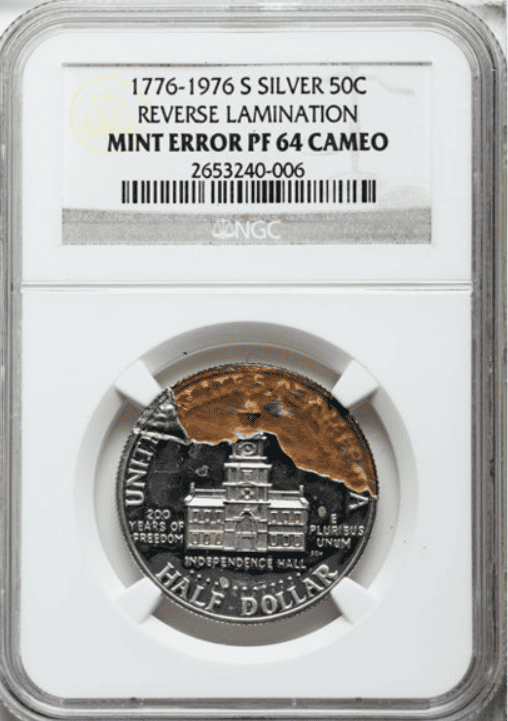
Lamination errors generally occur when some kind of foreign substance contaminates the metal planchet.
That’s what happened to one silver bicentennial half dollar struck in San Francisco. The error was visible on the reverse, at the top of the image of Independence Hall. There, the lamination had begun to crack and chip away.
With some rare coins, lamination errors can detract from value. But in this case, it added interest and increased the value collectors were willing to pay. One snapped the coin up at auction for just under $500.
1976 S Clad Proof Half Dollar, Double Die Reverse
Double die errors occur during the manufacture of the die. The die has to be struck repeatedly with a hub to transfer all the elements of the design. But if there’s any movement between the strikes, the result is a double image.
If the error is on the die used to strike the reverse, the resulting coin is known as a double die reverse, or DDR. If it’s on the obverse, the coin is a double die obverse, or DDO.
A few 1976 clad proof half dollars struck in San Francisco have double die reverses. Look closely and you’ll see that the tops of the letters of “HALF” in the denomination are notched. The doubling is also visible on the designer’s initials and on the motto “IN GOD WE TRUST”.
The values for these half dollars depend on their condition. The PCGS values an example graded PR65 at $400, rising to $700 at PR67.
The finest known coin is a deep cameo graded PR69. There’s no public sales information for that, but the PCGS values a deep cameo graded a point lower at a healthy $1,600.
Check out this YouTube video from JBCoinsInc for more examples of error coins amongst 1976 half dollars.
Where to Sell Your 1976 Half Dollar ?
Now that you know the value of your coins, do you know where to sell those coins online easily? Don’t worry, I’ve compiled a list of these sites, including their introduction, pros, and cons.
Check out now: Best Places To Sell Coins Online (Pros & Cons)
FAQs
Is a 1776-1976 D half dollar worth anything?
That depends on its condition and on whether it has an interesting error. The majority of these coins are worth only their face value, or a few dollars.
But the coins in the very finest condition can be worth much more. An example graded MS67 on the coin grading scale is worth well over $1,000.
Is a 1976 half dollar real silver?
It might be – or it might not! The 1976 dollars were made in both 40% silver and cupro-nickel varieties, the latter commonly referred to as “clad”.
The easiest way to tell the difference is to weigh them using a very accurate set of scales. The silver dollars – or at least, those that contain 40% silver – are slightly heavier. They weigh 11.5 grams, while the clad variety weigh 11.3 grams.

